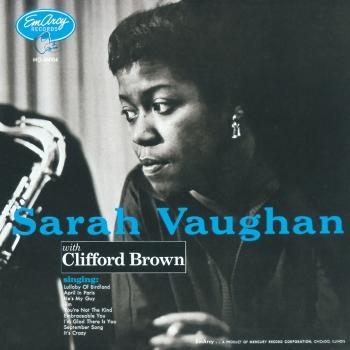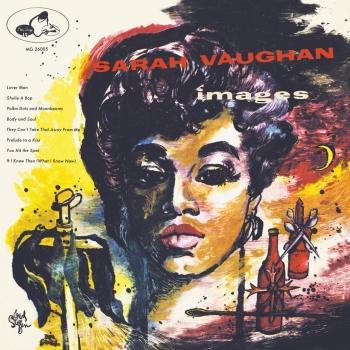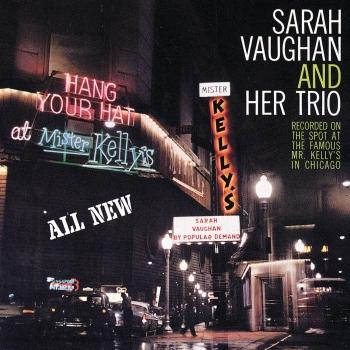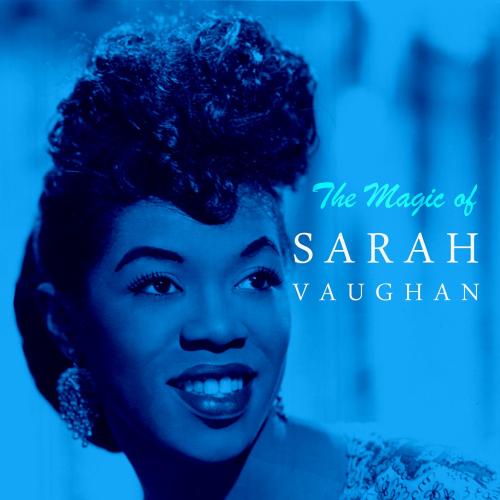
The Magic of Sarah Vaughan (Remastered) Sarah Vaughan
Album info
Album-Release:
2016
HRA-Release:
04.08.2017
Album including Album cover
I`m sorry!
Dear HIGHRESAUDIO Visitor,
due to territorial constraints and also different releases dates in each country you currently can`t purchase this album. We are updating our release dates twice a week. So, please feel free to check from time-to-time, if the album is available for your country.
We suggest, that you bookmark the album and use our Short List function.
Thank you for your understanding and patience.
Yours sincerely, HIGHRESAUDIO
- 1 That Old Black Magic 02:55
- 2 Careless 02:12
- 3 Separate Ways 02:24
- 4 Are You Certain 02:14
- 5 Mary Contrary 02:43
- 6 Broken Hearted Melody 02:23
- 7 I've Got the World on a String 03:15
- 8 Friendly Enemies 02:21
- 9 What's so Bad About It 01:59
- 10 Sweet Affection 02:07
Info for The Magic of Sarah Vaughan (Remastered)
Possessor of one of the most wondrous voices of the 20th century, Sarah Vaughan ranked with Ella Fitzgerald and Billie Holiday in the very top echelon of female jazz singers. She often gave the impression that with her wide range, perfectly controlled vibrato, and wide expressive abilities, she could do anything she wanted with her voice. Although not all of her many recordings are essential (give Vaughan a weak song and she might strangle it to death), Sarah Vaughan's legacy as a performer and a recording artist will be very difficult to match in the future.
Vaughan sang in church as a child and had extensive piano lessons from 1931-39; she developed into a capable keyboardist. After she won an amateur contest at the Apollo Theater, she was hired for the Earl Hines big band as a singer and second vocalist. Unfortunately, the musicians' recording strike kept her off record during this period (1943-44). When lifelong friend Billy Eckstine broke away to form his own orchestra, Vaughan joined him, making her recording debut. She loved being with Eckstine's orchestra, where she became influenced by a couple of his sidemen, Charlie Parker and Dizzy Gillespie, both of whom had also been with Hines during her stint. Vaughan was one of the first singers to fully incorporate bop phrasing in her singing, and to have the vocal chops to pull it off on the level of a Parker and Gillespie.
Other than a few months with John Kirby from 1945-46, Sarah Vaughan spent the remainder of her career as a solo star. Although she looked a bit awkward in 1945 (her first husband George Treadwell would greatly assist her with her appearance), there was no denying her incredible voice. She made several early sessions for Continental: a December 31, 1944 date highlighted by her vocal version of "A Night in Tunisia," which was called "Interlude," and a May 25, 1945 session for that label that had Gillespie and Parker as sidemen. However, it was her 1946-48 selections for Musicraft (which included "If You Could See Me Now," "Tenderly" and "It's Magic") that found her rapidly gaining maturity and adding bop-oriented phrasing to popular songs. Signed to Columbia where she recorded during 1949-53, "Sassy" continued to build on her popularity. Although some of those sessions were quite commercial, eight classic selections cut with Jimmy Jones' band during May 18-19, 1950 (an octet including Miles Davis) showed that she could sing jazz with the best.
During the 1950s, Vaughan recorded middle-of-the-road pop material with orchestras for Mercury, and jazz dates (including a memorable collaboration with Clifford Brown) for the label's subsidiary, EmArcy. Later record label associations included Roulette (1960-64), back with Mercury (1963-67), and after a surprising four years off records, Mainstream (1971-74). Through the years, Vaughan's voice deepened a bit, but never lost its power, flexibility or range. She was a masterful scat singer and was able to out-swing nearly everyone (except for Ella). Vaughan was with Norman Granz's Pablo label from 1977-82, and only during her last few years did her recording career falter a bit, with only two forgettable efforts after 1982. However, up until near the end, Vaughan remained a world traveler, singing and partying into all hours of the night with her miraculous voice staying in prime form. The majority of her recordings are currently available, including complete sets of the Mercury/Emarcy years, and Sarah Vaughan is as famous today as she was during her most active years. ~ Scott Yanow, All Music Guide
„The Magic of Sarah Vaughan features the legendary jazz singer singing some of her best-known songs. Her incredible voice, which was one of the few to truly adapt to the changes in jazz music during the '40s and '50s, is enough to recommend this album. Fans of jazz probably already know how good she is, but to those unfamiliar with Vaughan, this is a great place to start.“ (Bradley Torreano, AMG)
Sarah Vaughan, vocals
Digitally remastered
Sarah Vaughan
Jazz critic Leonard Feather called her “the most important singer to emerge from the bop era.” Ella Fitzgerald called her the world’s “greatest singing talent.” During the course of a career that spanned nearly fifty years, she was the singer’s singer, influencing everyone from Mel Torme to Anita Baker. She was among the musical elite identified by their first names. She was Sarah, Sassy — the incomparable Sarah Vaughan.
Born in Newark, New Jersey, in 1924, Vaughan was immediately surrounded by music: her carpenter father was an amateur guitarist and her laundress mother was a church vocalist. Young Sarah studied piano from the age of seven, and before entering her teens had become an organist and choir soloist at the Mount Zion Baptist Church. When she was eighteen, friends dared her to enter the famed Wednesday Night Amateur Contest at Harlem’s Apollo Theater. She gave a sizzling rendition of “Body and Soul,” and won first prize. In the audience that night was the singer Billy Eckstine. Six months later, she had joined Eckstine in Earl Hines’s big band along with jazz legends Dizzy Gillespie and Charlie Parker.
When Eckstine formed his own band soon after, Vaughan went with him. Others including Miles Davis and Art Blakey, were eventually to join the band as well. Within a year, however, Vaughan wanted to give a solo career a try. By late 1947, she had topped the charts with “Tenderly,” and as the 1940s gave way to the 1950s, Vaughan expanded her jazz repertoire to include pop music. As a result, she enlarged her audience, gained increased attention for her formidable talent, and compiled additional hits, including the Broadway show tunes “Whatever Lola Wants” and “Mr. Wonderful.” While jazz purists balked at these efforts, no one could deny that in any genre, Vaughan had one of the greatest voices in the business.
In the late 1960s, Vaughan returned to jazz music, performing and making regular recordings. Throughout the 1970s and ’80s she recorded with such jazz notables as Oscar Peterson, Louie Bellson, Zoot Sims, Herbie Hancock, Ron Carter, Don Cherry, and J.J. Johnson. Her recordings of the “Duke Ellington Song Book (1 and 2)” are considered some of the finest recordings of the time. While for many years her signature song had been “Misty,” by the mid-70’s, she was closing every show with Sondheim’s “Send In The Clowns.” In 1982, while in her late fifties, Vaughan won the Grammy for Best Jazz Vocalist for her album, “Gershwin Live”!
While she continued to work without the massive commercial success enjoyed by colleagues such as Peggy Lee, Rosemary Clooney, and Ella Fitzgerald, Sarah Vaughan consistently retained a special place in the hearts of fellow musicians and audiences alike. She continually performed at top venues, playing to adoring sell-out crowds well into her sixties. Remarkably, unlike many singers, she lost none of her extraordinary talent as time went on. Her multi-octave range, with its swooping highs and sensual lows, and the youthful suppleness of her voice shaded by a luscious timbre and executed with fierce control, all remained intact. In 1990, at the age sixty-six, Sarah Vaughan passed away. Shortly after her death, Mel Torme summed up the feelings of all who had seen her, saying “She had the single best vocal instrument of any singer working in the popular field.” (Source: http://www.pbs.org)
This album contains no booklet.












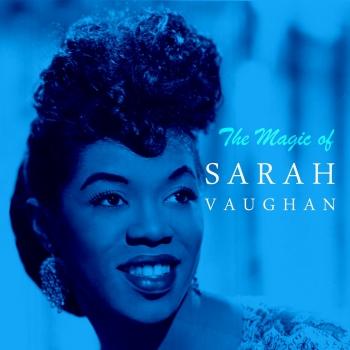
![Cover Sarah Vaughan Sings George Gershwin (Remastered) [ Mono ]](https://storage.highresaudio.com/web/imgcache/f3f0b108a99b105778665e01d1d3059d/reqpdp-sarahvaugh-master_350x350.jpg)
